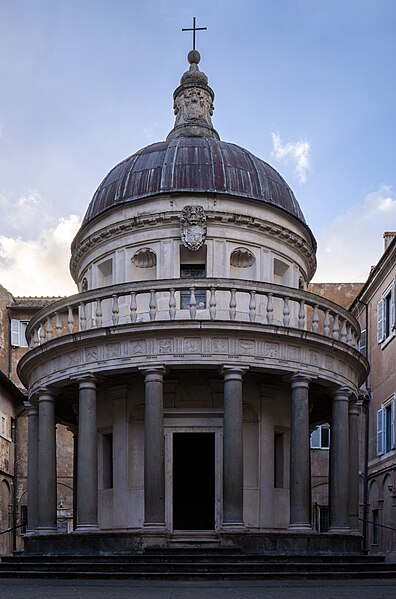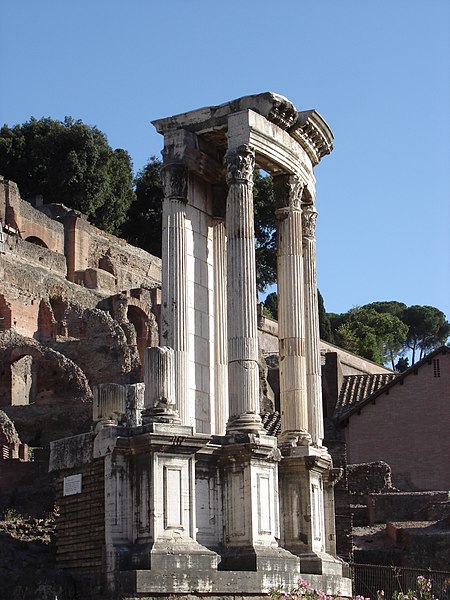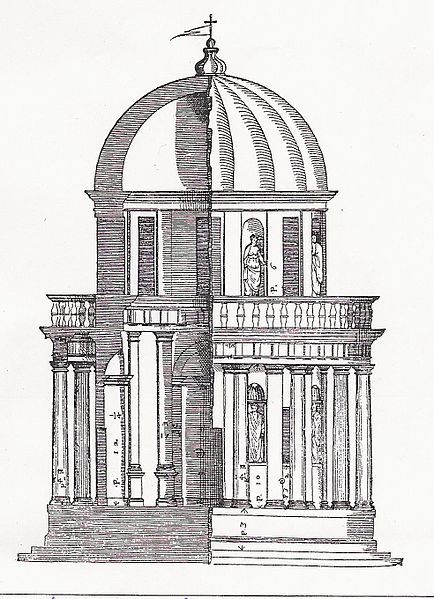Donato Bramante, born as Donato di Pascuccio d'Antonio and also known as Bramante Lazzari, was an Italian architect and painter. He introduced Renaissance architecture to Milan and the High Renaissance style to Rome, where his plan for St. Peter's Basilica formed the basis of the design executed by Michelangelo. His Tempietto marked the beginning of the High Renaissance in Rome (1502) when Pope Julius II appointed him to build a sanctuary over the spot where Peter was martyred.
Donato Bramante
Tempietto
A draft for St Peter's superimposed over a plan of the ancient basilica
The dome, as planned by Bramante
Renaissance architecture is the European architecture of the period between the early 15th and early 16th centuries in different regions, demonstrating a conscious revival and development of certain elements of ancient Greek and Roman thought and material culture. Stylistically, Renaissance architecture followed Gothic architecture and was succeeded by Baroque architecture and neoclassical architecture. Developed first in Florence, with Filippo Brunelleschi as one of its innovators, the Renaissance style quickly spread to other Italian cities. The style was carried to other parts of Europe at different dates and with varying degrees of impact.
Tempietto del Bramante, San Pietro in Montorio, Rome, 1502, by Donato Bramante. This small temple marks the place where St. Peter was crucified.
The Temple of Vesta in Rome was the model for Bramante's Tempietto.
Palazzo Senatorio, seat of the municipality of Rome. It has been a town hall since AD 1144, making it the oldest town hall in the world.
Palladio's engraving of Bramante's Tempietto







